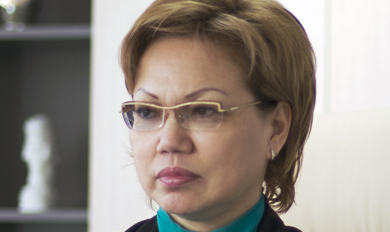The efforts of countries for sustainable development are especially relevant today when the entire system of international relations is facing new global challenges. Today, opportunities for cooperation between states and the private sector and public organisations as well as increasingly accessible technologies help address complex and unresolved past issues.
The trend, approved at the 21st United Nations Framework Convention on Climate Change (UNFCCC) Conference on Climate Change (COP21) in 2015, remains a priority in the global economy and demonstrates the constructive attitude of the leading powers under the auspices of the UN towards the need to transform the commodity model of the economy and transition to a low-carbon development model.
According to estimates by the International Energy Agency (IEA), even an annual delay in the start of more active actions to reduce greenhouse gas emissions under the new climate agreement will inevitably lead to an increase in global economic costs of $1 trillion and a reduction of the global GDP in 2030 by 1.9 percent.
Kazakhstan has declared itself an initiator and responsible participant in international and regional programmes for sustainable development and ecology. As it is known, Kazakhstan has ratified more than the 22 UN environmental conventions, including the Kyoto Protocol (2009) and the Paris Climate Agreement (PCA, 2015), under which the country has committed to reduce greenhouse gas (GHG) emissions by 15-25 percent from the 1990 level.
Mitigating global climate warming by reducing GHGs emissions and environmental pollutions are some of the main directions of the Green Bridge Partnership Programme (GBPP) suggested by the First President of Kazakhstan, Nursultan Nazarbayev, in 2012 and approved by the 66th United Nations General Assembly.
Unfortunately, the potential of the GBPP included in the Rio Declaration has not been realised. At the same time, when cross-country initiatives are welcomed, such as the С40 initiative in which cities around the world work together and share experiences, they should be updated and should be used as a driver for the implementation of the PCA not only in Kazakhstan but also in the Asia-Pacific region.
Green Academy was established in 2013 and was the first green think tank in the Commonwealth of Independent States (CIS). Its experts have identified at least three trends in the framework of the PCA. First is planning the development of energy and the economy, taking into account the likely changes for 2020-2040. In many cases, this leads to a wait-and-see attitude in approving international and national projects that would be profitable if the current situation were maintained.
Second, the introduction of the “carbon price,” which are charges for greenhouse gas emissions in one form or another in a stimulating or burdensome form, that is being implemented or expected in the future, which shifts the competitiveness of various projects and trade flows. This is clearly evidenced by the results of bilateral meetings of the main emitters such as China, the United States, the European Union and India.
Third, the total trend towards the choice of low-carbon solutions, if, when planning for 20-30 years in terms of profitability, they are equal in costs or not significantly more expensive than traditional ones. This is clearly confirmed when concluding partnership deals and choosing investment options in almost all countries of the world and in state and private companies in all sectors of the economy.
Without the implementation of pilot projects for the development of breakthrough low-carbon technologies in the next decade, it will be practically impossible to restrain the increase in global average temperature by more than 2 degrees Celsius. At present, a wide range of technologies exist and are successfully used in the world to ensure economic growth and at the same time reduce emissions and improve the quality of the environment.
For Kazakhstan, an important direction in harnessing the carbon potential is to increase energy efficiency and energy conservation in all sectors of the national economy. According to the calculations of the National Chamber of Energy Auditors and Experts, the potential for energy saving in the whole of Kazakhstan, according to the energy audit of top 50 enterprises, is up to five million tonnes of standard fuel, which will reduce CO2 to 3.6 million tonnes per year, i.e. almost one percent of total GHGs emission in the country.
World experience demonstrates that the UN countries in terms of the implementation of Paris Climate Agreement have started to develop low carbon strategies on the national and sub-regional levels. In this regard, it is hoped the new Ministry of Ecology, Geology and Natural Resources of Kazakhstan continues to develop the low carbon strategy started in 2016 with the wide participation of scientists, experts, businesses and NGOs.
The author is a member of the Green Council under President of Kazakhstan and Director of the Green Academy Scientific Research and Education Centre.



